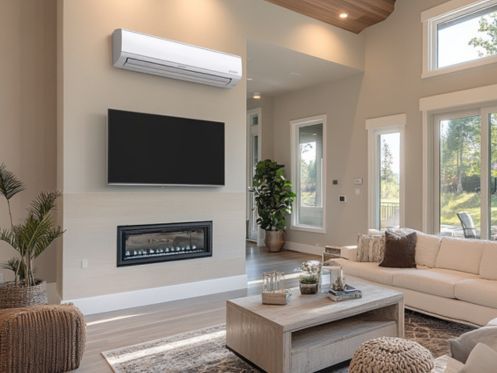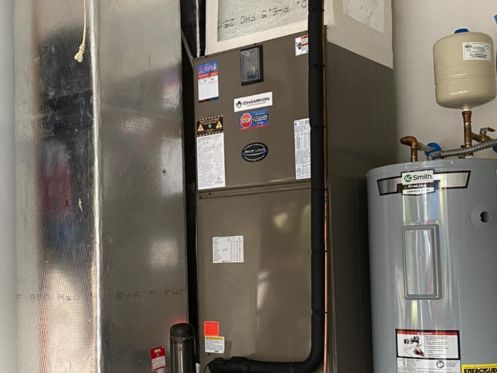Energy-Efficient HVAC Upgrades for Vero Beach Homes
Energy-efficient HVAC upgrades can significantly lower energy bills, reduce your carbon footprint, and enhance comfort in Vero Beach homes.
With a warm climate that demands reliable cooling year-round, these upgrades are not just practical but essential for homeowners looking to save money and embrace sustainable living.
Let’s dive into how you can benefit from energy-efficient HVAC solutions tailored to your home.
Why Energy Efficiency Matters in Vero Beach
Energy efficiency isn’t just a buzzword—it’s a necessity in Vero Beach. With high temperatures and humidity dominating much of the year, HVAC systems are constantly working to keep homes cool. Without energy-efficient technology, this can lead to:
- Skyrocketing utility bills: Traditional systems consume significantly more power to maintain cooling.
- Greater environmental impact: Inefficient energy use contributes to higher carbon emissions.
- Wear and tear on systems: Older units may overwork themselves, leading to frequent breakdowns.
Energy-efficient upgrades reduce energy waste, allowing you to maintain comfort while lowering costs.
Air Docs Heating and Air offers expert consultations to ensure your HVAC system aligns with the demands of the Florida climate.
Recognizing When It’s Time for an HVAC Upgrade
Understanding when your HVAC system needs attention is critical to avoiding excessive costs or discomfort. Here are telltale signs:
- Frequent breakdowns: Repairs are becoming more common and expensive.
- Uneven cooling: Some rooms remain warm despite running the system.
- High utility bills: Even with moderate use, your costs are climbing.
- Old age: Systems older than 10–15 years often lack modern efficiency standards.
Procrastinating on an upgrade can lead to compounding costs over time.
Avoid this by reaching out to Air Docs Heating and Air for a professional assessment of your HVAC system.
The Benefits of High-Efficiency HVAC Systems
Modern HVAC systems incorporate cutting-edge technologies designed to optimize cooling and energy use. Key features include:
- Variable-speed compressors: Deliver the precise amount of cooling needed, reducing energy waste.
- Smart thermostats: Enable automated scheduling and remote adjustments for enhanced control.
- Enhanced filtration systems: Improve indoor air quality by capturing allergens and pollutants.
In a humid climate like Vero Beach, these advanced systems provide consistent cooling, better humidity control, and significant savings on energy bills.
For more information, read: How to Choose the Right HVAC System for Your Home
Understanding SEER Ratings and Their Importance
The Seasonal Energy Efficiency Ratio (SEER) measures how efficiently an HVAC system cools your home. Higher SEER ratings translate to greater energy savings. Here’s a breakdown:
- SEER 13–14: Standard efficiency; suitable for minimal cooling needs.
- SEER 15–20+: High efficiency; designed for climates like Vero Beach where cooling is a year-round requirement.
Choosing a high-SEER system is an investment that pays off through lower energy bills and increased home comfort.
Let Air Docs Heating and Air guide you in selecting the best system for your home.
The Convenience of Smart Thermostats
Upgrading to a programmable or smart thermostat is a small change with big benefits:
- Energy savings: Reduce cooling while you’re away or asleep.
- Remote control: Adjust temperatures using your smartphone, even when you’re not home.
- Energy usage reports: Track and optimize your energy consumption with detailed analytics.
Smart thermostats can adapt to your lifestyle, learning your preferences to maximize efficiency automatically. Explore options tailored to your needs with Air Docs Heating and Air.
Optimizing Ductwork for Maximum Efficiency
Ductwork plays a pivotal role in your HVAC system’s overall efficiency. Over time, issues such as leaks, blockages, or improper sizing can arise, leading to:
- Energy waste: Leaks allow cool air to escape, making your system work harder.
- Reduced airflow: Blockages prevent consistent cooling throughout the home.
- Poor air quality: Dust and allergens can seep into the system through leaks.
Sealing, insulating, or resizing ducts ensures optimal performance and cost savings. Contact Air Docs Heating and Air to assess and optimize your ductwork.
Zoning Systems: Tailored Comfort for Every Room
Zoning systems allow you to divide your home into separate areas, each with individual temperature controls. This is particularly beneficial for:
- Multi-story homes: Prevent overcooling or overheating certain floors.
- Custom comfort needs: Tailor temperatures for different family members or spaces.
- Energy savings: Avoid cooling rooms that aren’t in use.
Zoning is a game-changer for larger homes in Vero Beach. Discuss your zoning options with Air Docs Heating and Air to enhance your home’s comfort and efficiency.
The Role of Routine HVAC Maintenance
Regular maintenance is essential to keep your HVAC system running at peak efficiency. Key tasks include:
- Replacing air filters: Prevent clogs and maintain steady airflow.
- Cleaning coils: Remove dirt that reduces cooling efficiency.
- Checking refrigerant levels: Ensure the system cools effectively without overworking.
Bi-annual maintenance is highly recommended for Vero Beach homeowners to prepare for Florida’s demanding weather.
Schedule your maintenance with Air Docs Heating and Air today.
Leveraging Local Incentives and Rebates
Florida homeowners can take advantage of various incentives and rebates for energy-efficient upgrades. Benefits include:
- Rebates from energy providers: Reduce upfront installation costs.
- Tax credits: Federal and state programs often reward energy-efficient home improvements.
- Lower lifetime costs: Reduced energy bills make upgrades a wise long-term investment.
Air Docs Heating and Air can help you explore available incentives to make your energy-efficient upgrades more affordable.
Final Thoughts
Energy-efficient HVAC upgrades are a must for Vero Beach homeowners who want to save money, reduce their carbon footprint, and enjoy year-round comfort.
From choosing high-SEER systems to implementing smart thermostats, ductwork optimization, and advanced accessories, the possibilities are endless.
Ready to make the switch? Contact Air Docs Heating and Air for expert advice and installation services. Take the first step toward a cooler, more energy-efficient home today!
FAQ
What is the most energy-efficient HVAC system for Florida’s climate?
High-efficiency systems with SEER ratings of 15 or higher are ideal for Florida. Consult with Air Docs Heating and Air to find the perfect match for your home.
How can I lower my HVAC energy costs?
Upgrade to a smart thermostat, maintain your system regularly, and ensure your ducts are optimized. Air Docs Heating and Air offers services to help you save.
Are there rebates for energy-efficient HVAC upgrades?
Yes, many local programs and energy providers offer rebates. Contact Air Docs Heating and Air to learn about available incentives.










